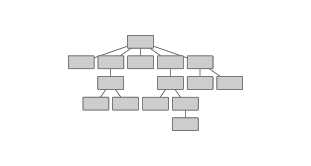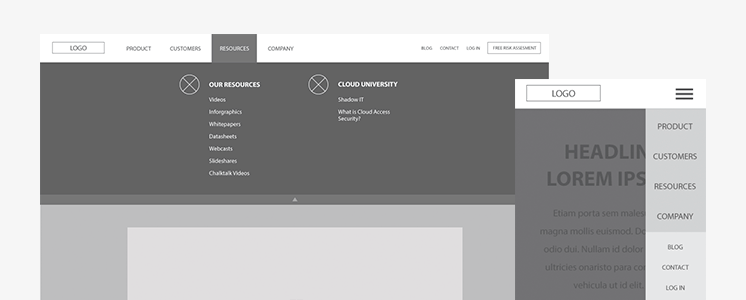Content Strategy
Our market research and competitor analysis allows us to create versed information architecture and intuitive way finding and can positively identify and create all elements to include on any webpage or publishing campaign. And the content strategy and creation is merely the beginning. Everything we create is tested, and analysed, which allows us to continually determine exactly what is working and what should need improvement.
The meaning of content strategy
Content strategy deals with the creation, publication, and governance of useful, persuasive content. This emerging field includes every aspect of content, taking care of its design, development, analysis, presentation, measurement, evaluation, production, and management. We draw from our clients’ business targets and their specific customer needs to analyse existing content and then create an exhaustive plan for future content, clearly defining which content will be published and why.
Information Architecture
When all the research and analysis is complete, we can continue with the first step toward creating site content: information architecture (IA). IA is fundamentally the organization and labelling of information to help users complete tasks, easily find what they’re looking for, and fully understand what they’ve found skills that clients find is easier said than done. We go well beyond foundational IA practices and spend a great amount of time making selections about how to best show and organize content throughout the site to channel users to the most applicable CTA. The result is a well-balanced sitemap, carefree user flow, intuitive navigation structures, and improved conversion rates.
Sitemap
A sitemap is a graphical diagram of the website architecture illustrating the hierarchal relationship among pages. We structure pages into groups, often with distinct subgroups, generating a hierarchy of content. Decisions about how exactly to categorize and group pages can have impressive consequences on usability and conversions. Each sitemap is highly analysed and refined to get the perfect balance between deep and flat hierarchy. While website visitors never see this type of visualization (below), the aspect of the hierarchy has an enormous impact on the end user’s experience.
Deep
 Deep sitemaps only have a few categories on each level and tend to hold a user’s hand. This type of hierarchy needs more user interaction and guides users through wide categories and tidy menus to lead the users to the page or pages. Many deep hierarchies require alternative navigation options and shortcuts to allow more experienced users to find information quickly and easily.
Deep sitemaps only have a few categories on each level and tend to hold a user’s hand. This type of hierarchy needs more user interaction and guides users through wide categories and tidy menus to lead the users to the page or pages. Many deep hierarchies require alternative navigation options and shortcuts to allow more experienced users to find information quickly and easily.
Flat
 Flat sitemaps give users a direct route to content. This allows specific content to be effortlessly discovered without forcing users to navigate through wide categories. While flat hierarchies tend to be easier to manage and less confusing than is burying content under multiple intervening layers, flat hierarchies can also be overwhelming by presenting too much information at one time, obligating users to skim or to fail to read the list closely enough.
Flat sitemaps give users a direct route to content. This allows specific content to be effortlessly discovered without forcing users to navigate through wide categories. While flat hierarchies tend to be easier to manage and less confusing than is burying content under multiple intervening layers, flat hierarchies can also be overwhelming by presenting too much information at one time, obligating users to skim or to fail to read the list closely enough.
User flows
We’re always thinking about how our client’s audience will progress through the site, designing user flows to verify our suppositions, refining the sitemap further, and determining navigation structures. All working together to channel users into the most convenient CTA. Using each target audience (developed during our initial market research and competitive analysis) combined with the client’s target, we design flows that are tied to clear goals and a defined buying cycle.
Wireframes
“A wireframe without a corresponding content strategy and a practical CMS design is a work of fantasy. Fantasy wireframes lead to broken experiences, unmet targets, and furious stakeholders.”
It’s easy to let aesthetics muffle strategy. In fact, all too often, website developers consider wireframes the first step of design rather than using wireframes as a final step in the planning process. Wireframes are the result of concentrated research, extensive analysis, and knowledgeable information architecture. All coming together as the initial website design begins to materialize.
In many circunstances, we take wireframes a step further and send clients a prototype of the project, allowing them to experience how the design will work. This facilitates our designers to spend less time trying to communicate their vision and more time improving usability.

In many cases, we take wireframes a step further and send clients a prototype of the project, allowing them to experience how the design will function. This enables our designers to spend less time trying to communicate their vision and more time iterating and improving the usability.
Let's Talk...
Ready to start a project or really curious about our services? Let’s talk about your ideas. We are prepared for our first conversation, so please fill out our project enquiry form in as much detail as possible.
Or We Can Just Be Friends
Have a question about one of our projects, our process, or just curious about our company. Drop us a note or give us a call; we’re happy to answer all your questions.
